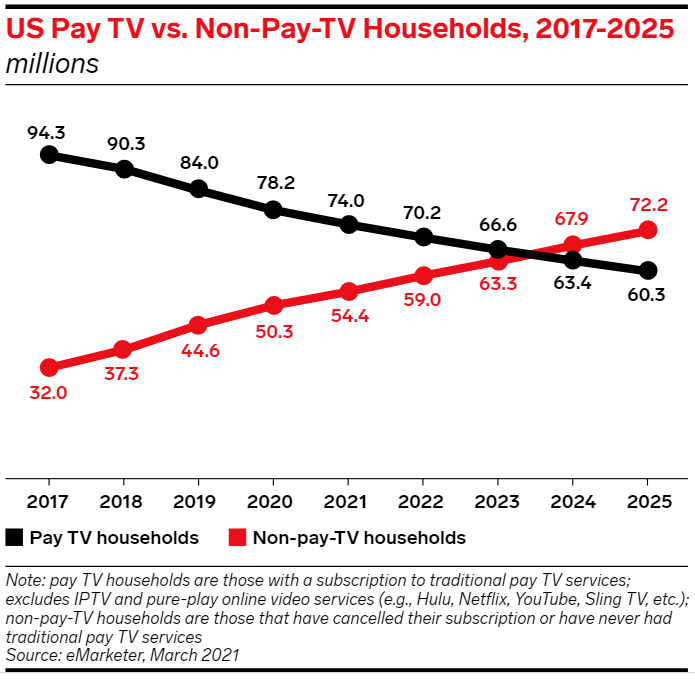YouTube today will host its yearly Brandcast showcase of its advertising products and creators as part of the Interactive Advertising Bureau’s NewFront sales presentations. The event is especially significant for the video-sharing platform, which is owned by search giant Google, as consumers spend more time watching YouTube on connected devices including smart TVs.
Among the leading over-the-top (OTT) streaming services, YouTube is second only to Netflix in terms of time spent by viewers consuming video. While 34% of that viewing time is spent with Netflix, which doesn’t carry advertising, 27% goes to YouTube, according to a study by media measurement firm Comscore. Hulu, Amazon Video and Disney+ round out the top five services for connected TV (CTV) viewers.
“As more and more services have recently launched, there’s this perception in the market that it’s actually quite fragmented, when in reality, it’s concentrated,” Brian Albert, managing director of U.S. agency video and creative works at Google & YouTube, said in this interview with Beet.TV. “Eighty percent of CTV viewership today falls on five apps.”

Source: eMarketer
Hulu and YouTube are the only two platforms among the top five that sell ads. Between those two ad-supported platforms, YouTube gets 40% of the watch time while the remainder is spread among Hulu and the multichannel video programming distributors (MVPDs), Albert said.
“This underscores a huge opportunity for brands to run dedicated CTV campaigns on YouTube to reach incremental younger audiences that, quite frankly, they’re having a really tough time reaching elsewhere,” Albert said. “We’re seeing a whole generation of new viewers popping up on YouTube who are primarily consuming YouTube on a TV screen.”
More than one quarter of YouTube’s logged-in viewers watched videos almost exclusively on the biggest screen in their households in December, its internal data show.
Showcasing YouTube Select
To cater to advertisers that seek to reach those audiences, YouTube last year launched YouTube Select to combine the best-quality content from its video-sharing platform with YouTube TV, which is the brand’s skinny bundle of networks that reaches households through a broadband connection.
“We plan to showcase it again this year, because there was great interest last year,” Albert said, “and we’ll do so alongside our core lineups offering, which bundles the best of YouTube based on passion and popularity across 13 different content categories.”
Those segments of content — which include entertainment, music, sports, comedy and gaming — are powerful at drawing audiences whose personal interests drive their viewing habits more than a fixation on production value or celebrity talent.
“There’s been a paradigm shift in motion for years,” Albert said. “Today, we very much live in an on-demand world where you and I and anyone else can watch whatever we want, when we want across whichever device. In this world, it’s really the viewers who are in control and not the networks.”
YouTube’s internal research found that ads running among endemic creator content on the platform were more effective at improving recall and driving purchase intent than ads within traditional TV network content on YouTube.
“Ultimately, it comes down to content that speaks to people personally,” Albert said. “As we’ve been saying for the past couple of years, ‘Primetime today is really personal. It’s not really a daypart, anymore.'”














































